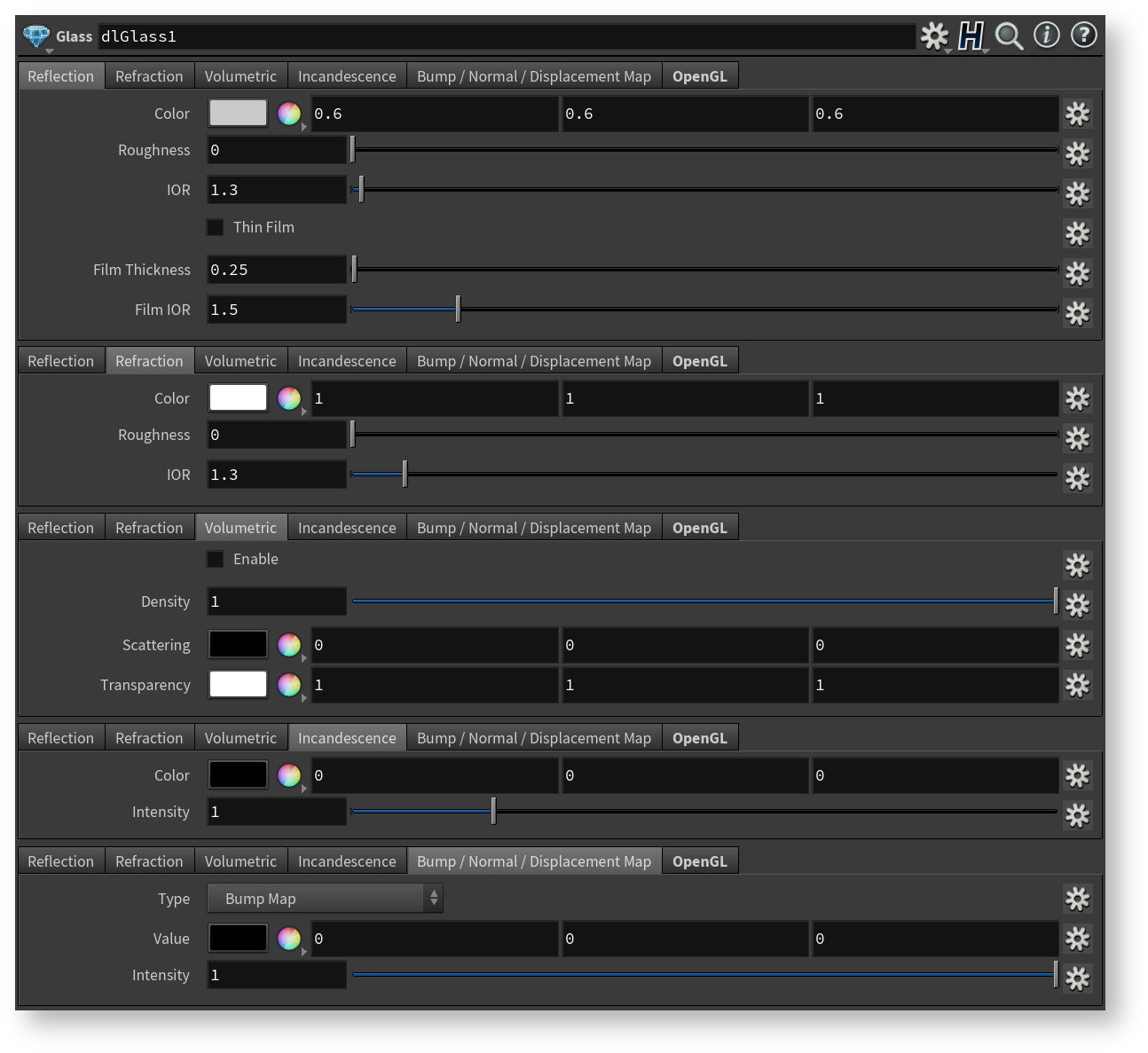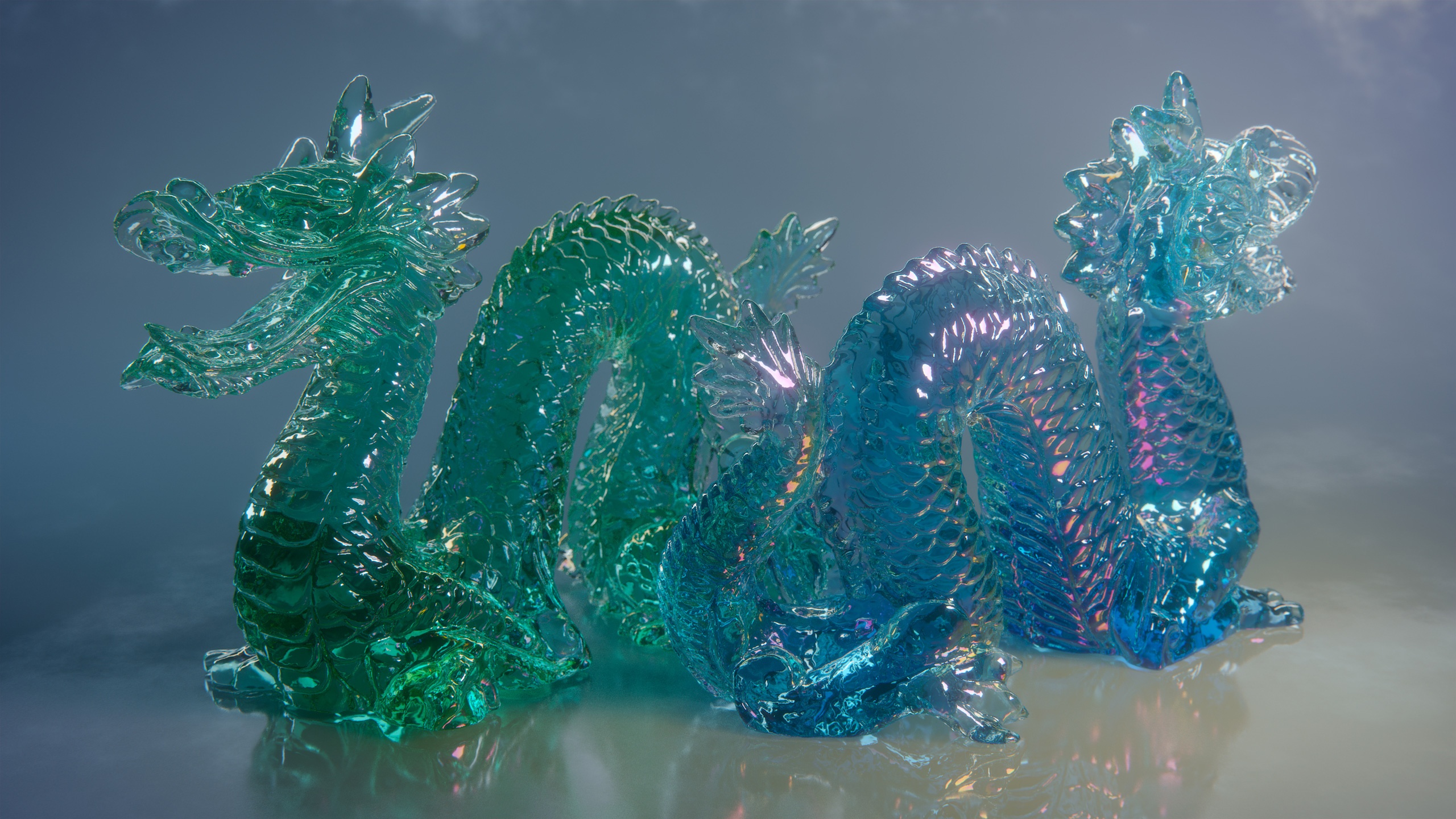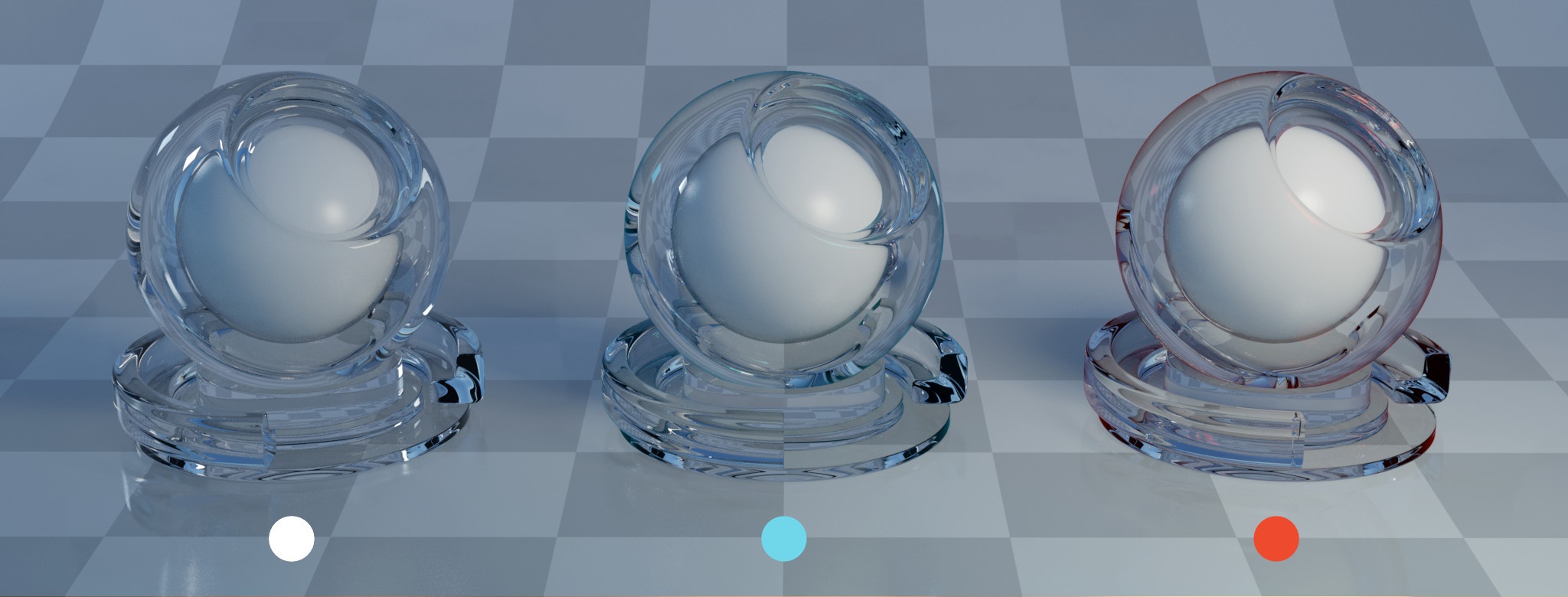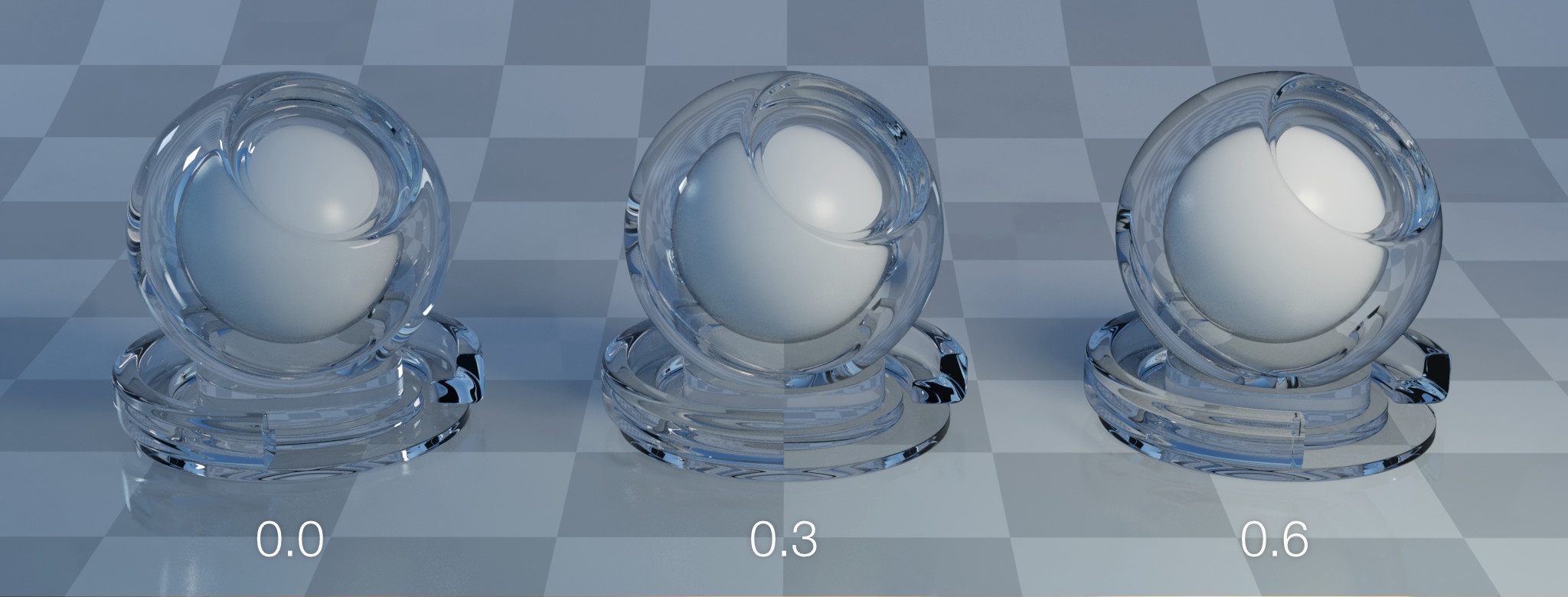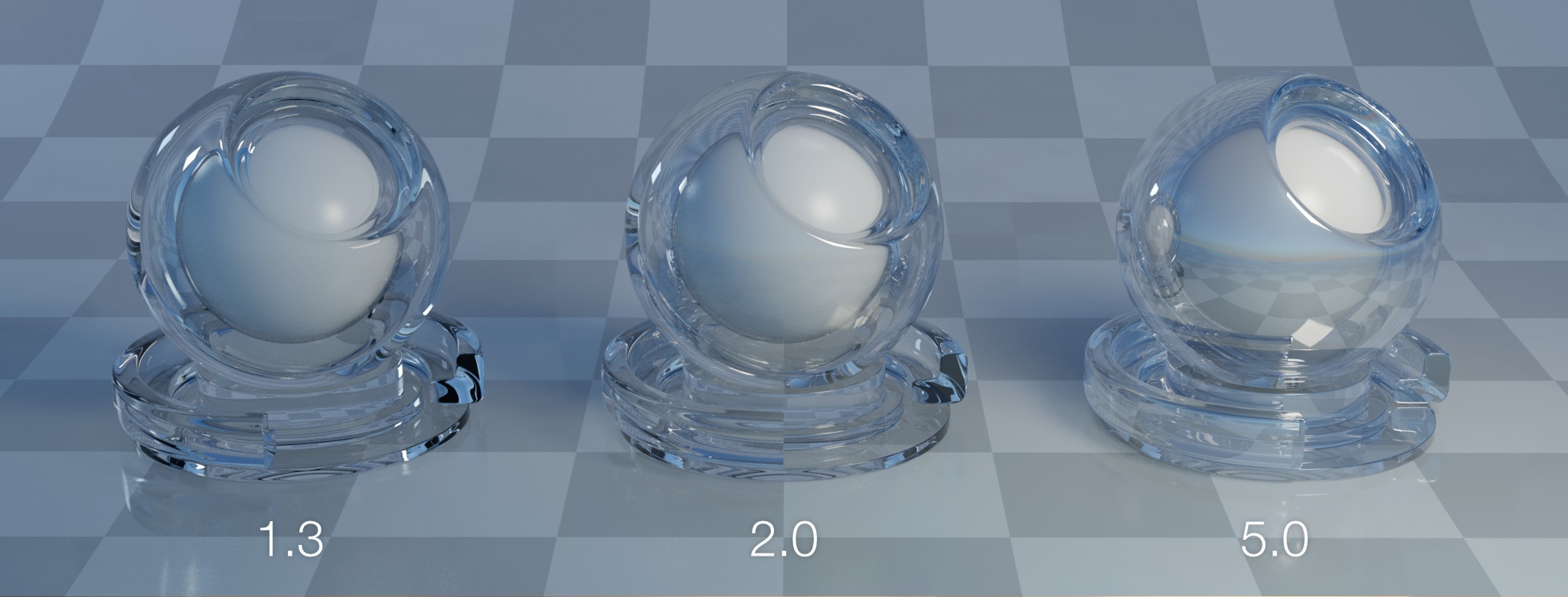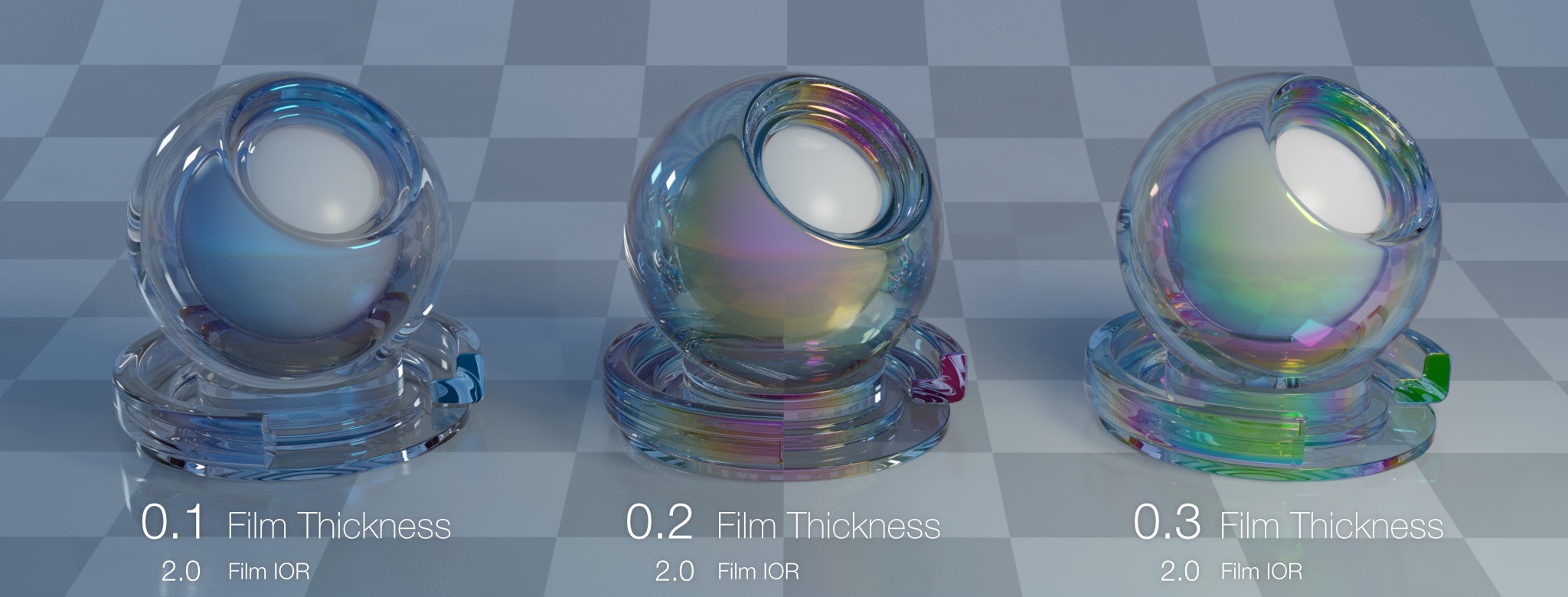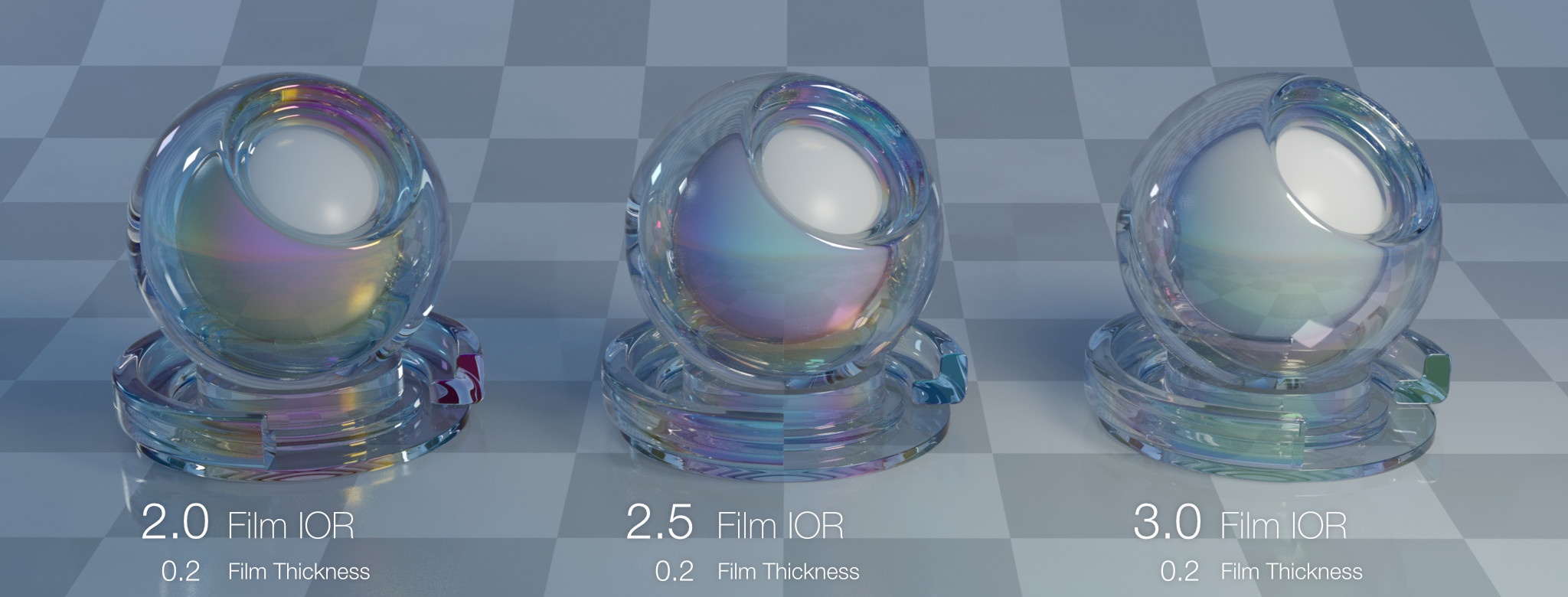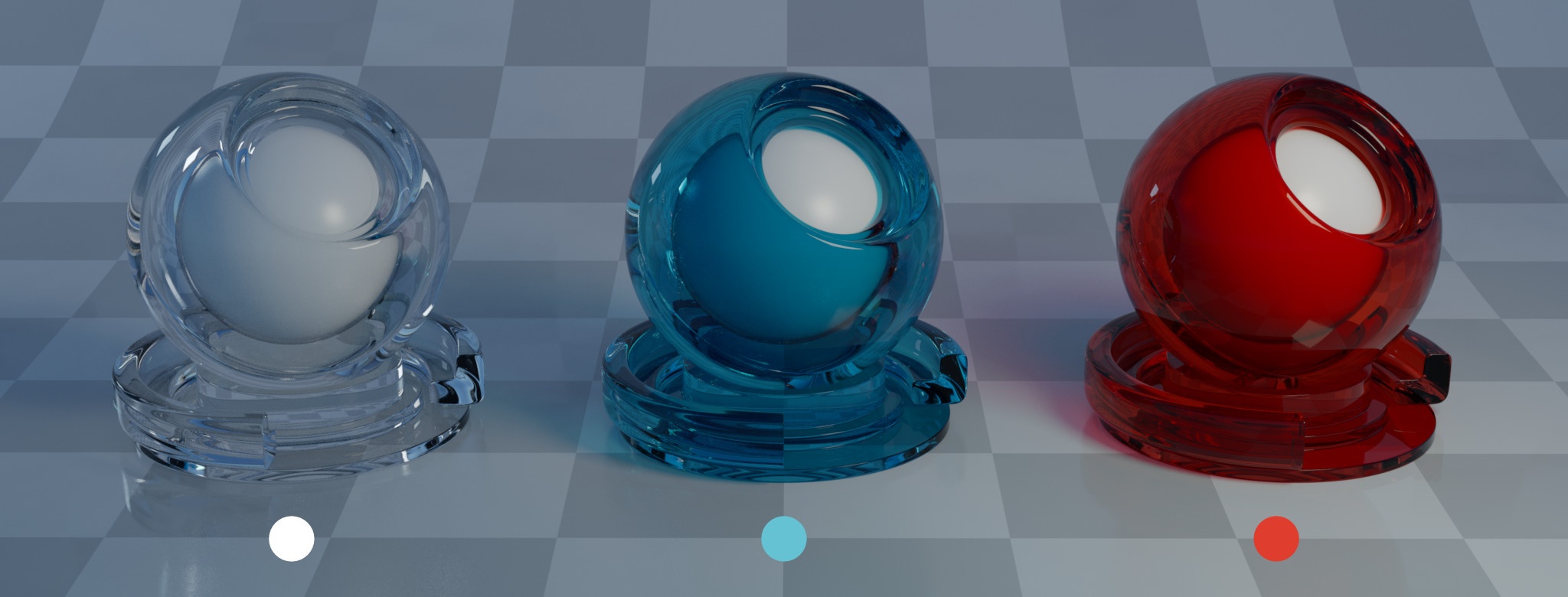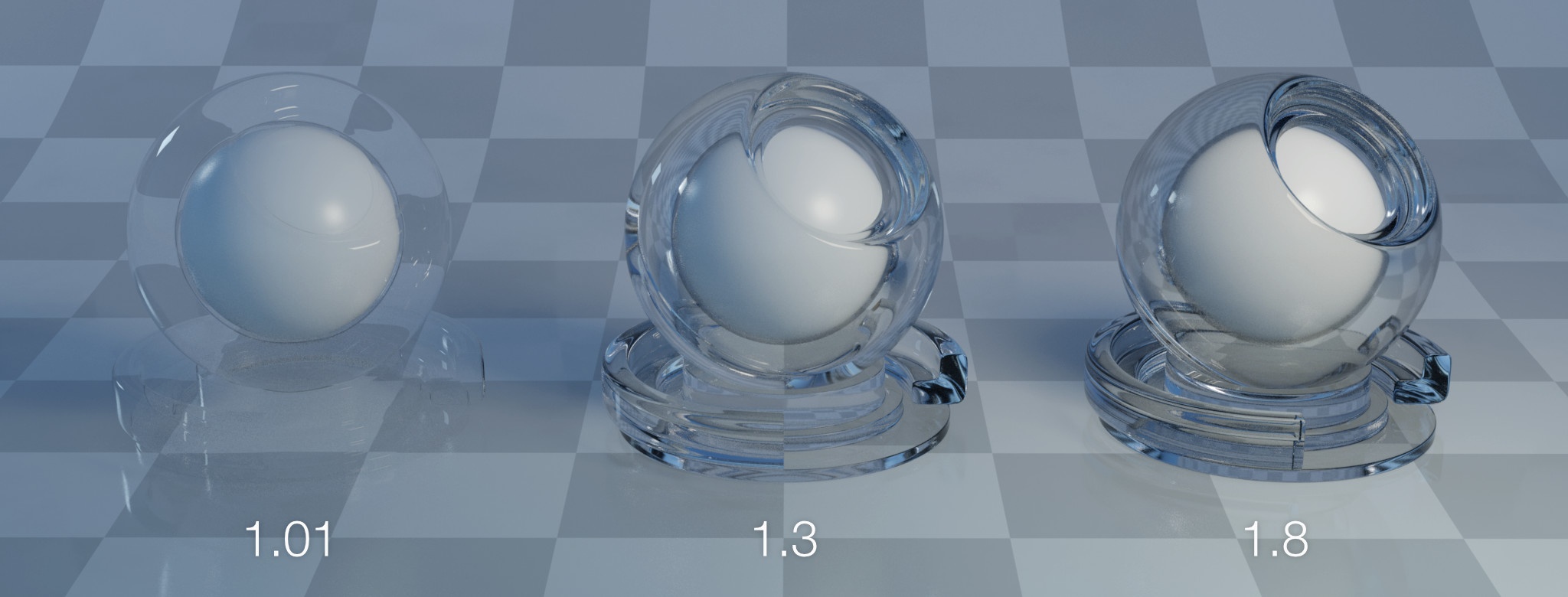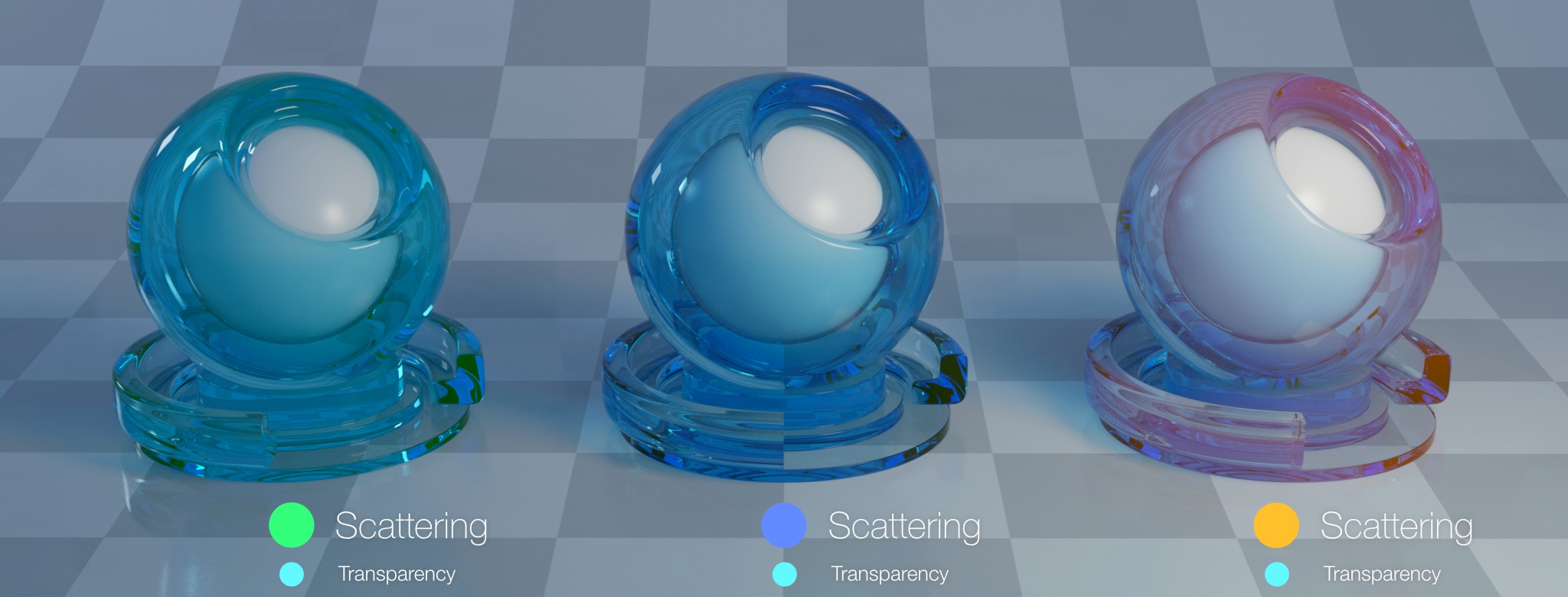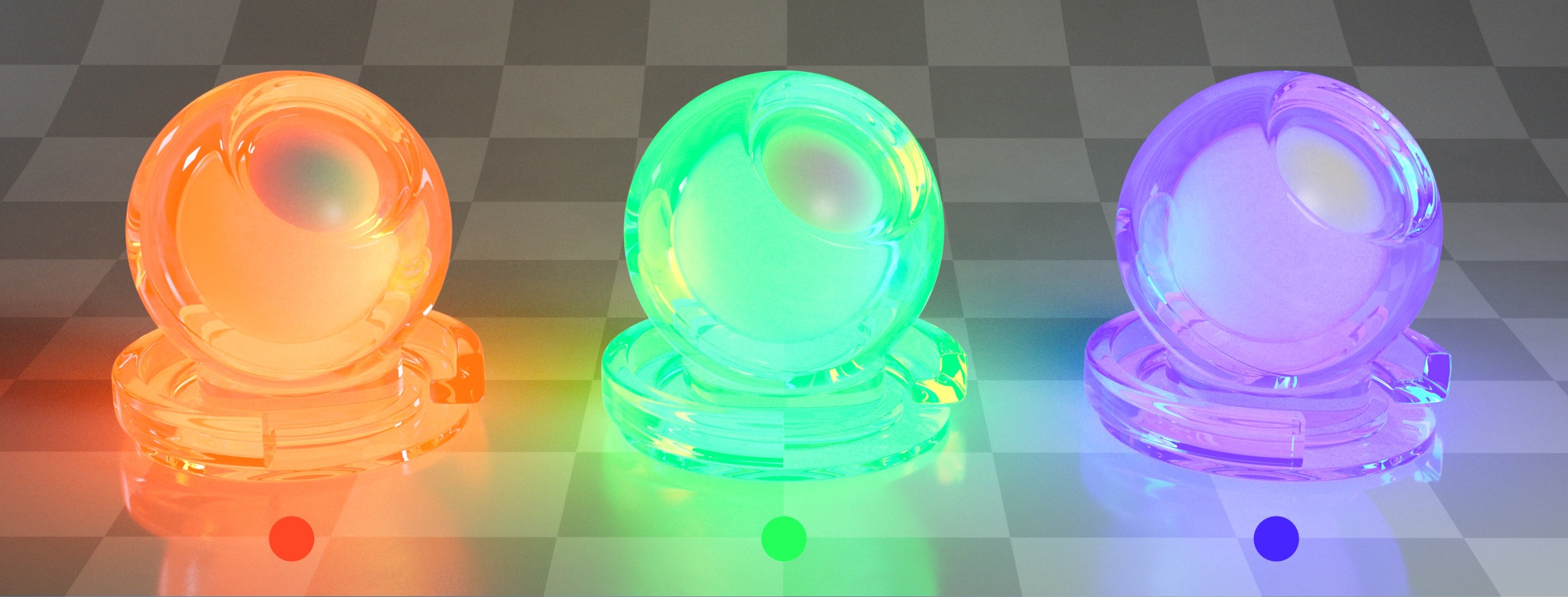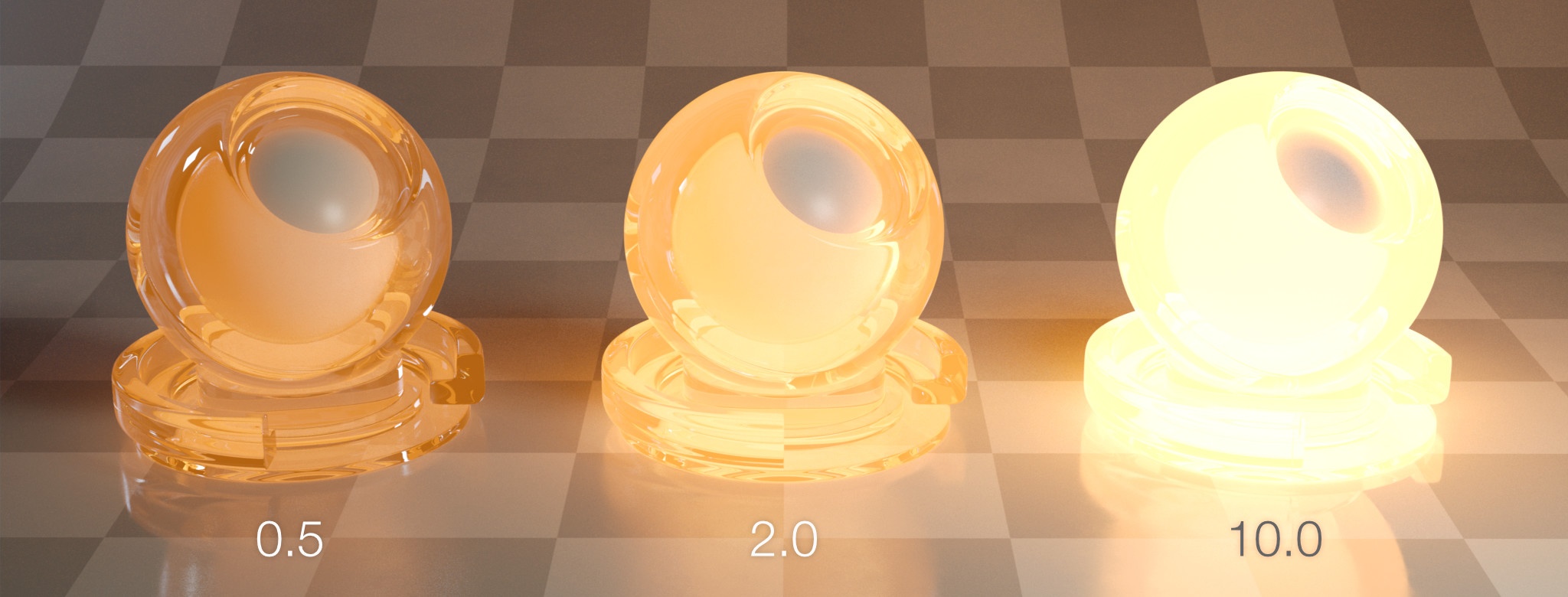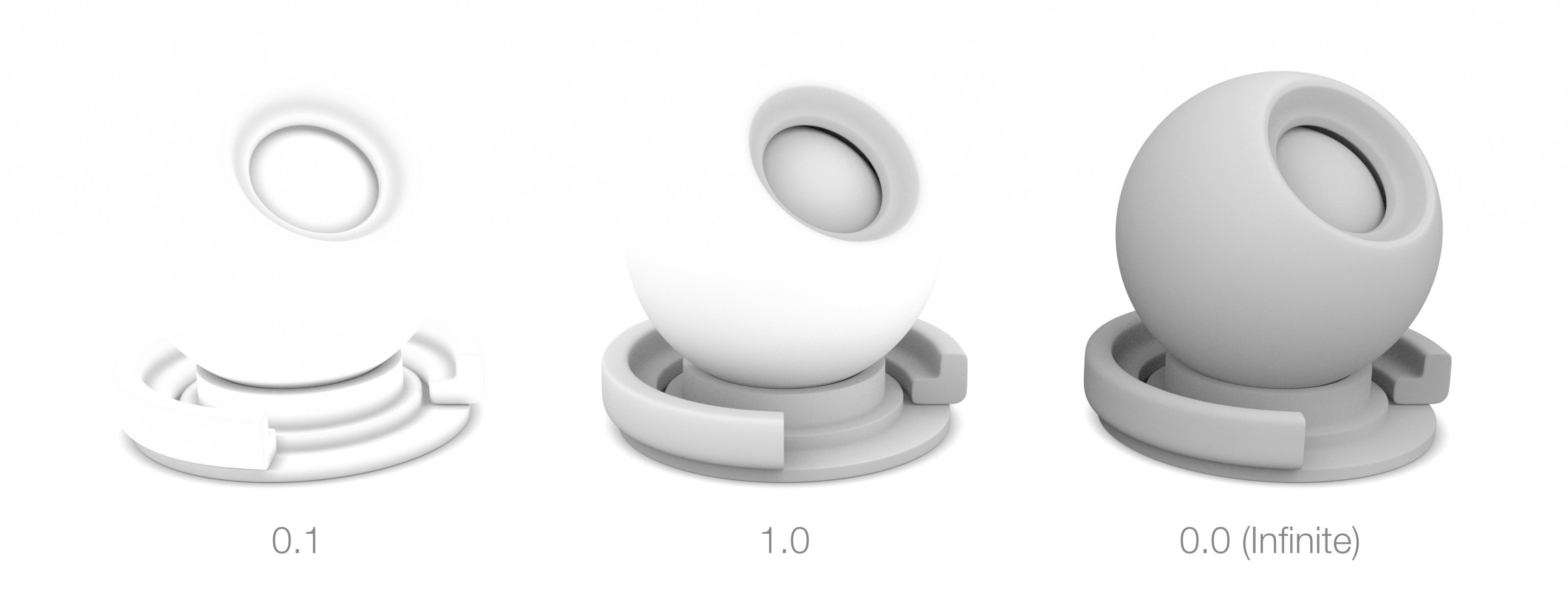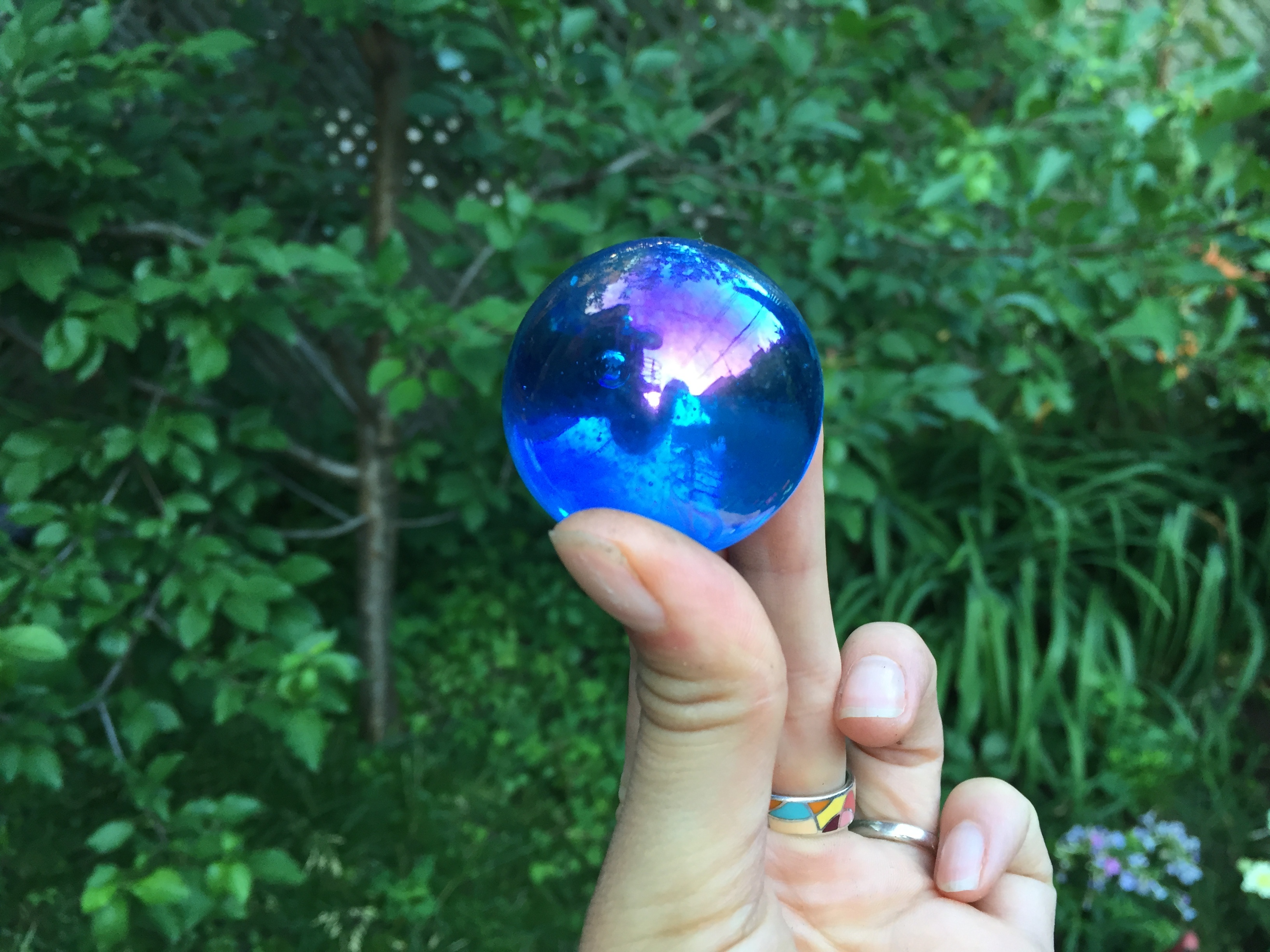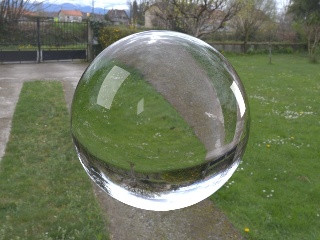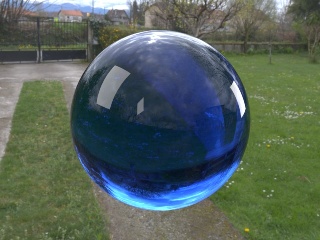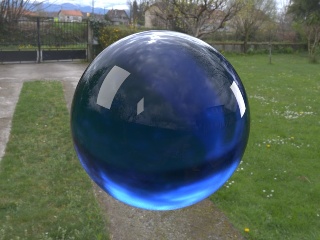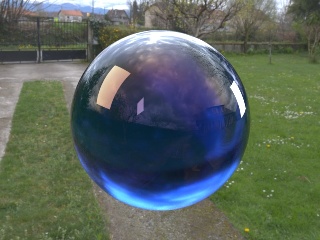The full UI of the glass material. Only two main components: reflection and refraction, supplemented by a physically accurate thin-film interference and volumetric rendering.
3Delight Glass allows rendering a variety of translucent materials, going from simple coloured glass and translucent plastics down to soap bubbles with complex light interference effects. Under the hood is the production-proven GGX BRDF.
The material has two main components: reflection and refraction. Each of these components has it's own roughness and index of refraction. This might appear counter-intuitive but it allows to simulate a variety of interesting surfaces as shown in the parameter description below. As a supplement to these two components, 3Delight Glass can simulate an additional thin film on the top of the surface. This thin film helps simulate real life surfaces such as tainted glass, oxidation and very thin materials.
Reflection |
|---|
Color
Specifies the color for reflections.
TIP
Glass can't have coloured reflection or refraction. It reflects and refracts light unaltered. Plastics on the other hand produce coloured reflections and refractions and this colour should be set to the colour of the plastic.
Roughness
This controls the specular roughness (for the GGX BRDF). The larger the value, the rougher is the surface. A roughness of zero generates mirror reflections.
IOR
The index of refraction to use to calculate Fresnel reflections. Higher values generate more prominent specular reflections. Note that there is a separate controls for refractions.
Thin Film
Enables thin-film interference. Thin film interference is a complex phenomena that depends on many variables, including viewing position and usually generates rich patterns on top of the rendered surface. 3Delight performs a physically correct light interference simulation of this phenomena.
Refraction |
|---|
Color
Sets the color of the refraction.Setting this color to 0 disables refraction. See comments in reflection color for further information.
Roughness
Sets the roughness of the refraction. The smaller the value, the smoother is the surface. Higher values can be used to emulate "ground glass" and also help emulate more complex material interiors.
IOR
Sets the index of refraction for refractions.
TIP
It is impossible for real world materials to have different IOR for reflection and refraction. It is useful in a context where 3D objects are not modeled properly. A good example is a soap bubble: the walls of the bubble are so thin that they are usually modeled using a single surface. In this case the IOR for refraction has to be set to 1 to simulate such a thin medium but the reflection could be set to a value higher than 1.
Volumetric |
|---|
Density
Specifies how dense the material is.
Transparency
Scattering
Incandescence |
|---|
Color
The colour the incandescence.
Intensity
The intensity of the incandescence.
Lights Other Objects
Indicates whether the incandescence should make the object behave like a light source (and affect other objects) or rather simply emit light directly into the camera, without any effect on the scene. Turning this off might improve performance on large objects.
Geometry |
|---|
Occlusion Distance
Lookdev Example: Marbles
We will try to approximate the look of this marble.
| Observation | Relationship to 3Delight Glass Parameters | Render |
|---|---|---|
| The marble is made of glass and has both reflection and refractions (transparent). | We choose an IOR of 1.3 ("light" glass) for both reflection and refraction and dial in the same color for both effects. | |
| We have and overall bluish color. Note that some part of the marble are still white (reflection of sky). | We definitely need a blue color for the "interior" of the marble. But which parameter to use, Refraction Color or Transmittance ? Since the inside of the marble is solid, Transmittance is the best choice because it will simulate an exponential light falloff. Transmittance = blue with a strength of 2.3 | |
| The interior of the ball is "fuzzy" while the reflections are mirror-like. | We can simulate such fuziness by using a Refraction Roughness larger than 0. Reflection Roughness = 0 | |
| There is a pink gradient on top of the sphere. This effect is recognizable as thin-film interference. In this case the marble must have some kind of very thin cover or has been heated and an oxide must have formed. | Simply enable thin-film interference and try to guess the IOR of the thin-film. As an educated guess, we set the IOR to 1.458 which is the index of refraction of silicon dioxide, a material that forms when glass is heated. Not surprisingly, we get a close enough match. Film Thickness = 0.25 ucm |
So we have a render that has many of the features of the original image. To continue the look development, one can use better lighting, internal object structure (air pockets) and varying thin-film thickness.
